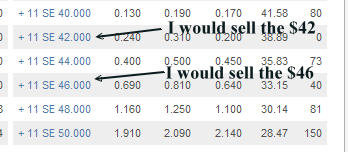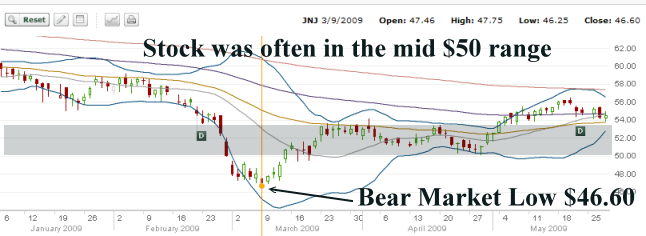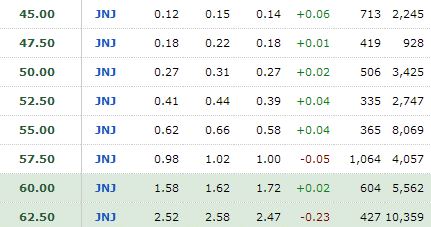I have been flooded with emails this past week from investors worried about the new Bear Market. Warren Buffett once said it was better to “embrace the bear market” than to fear it and he is right. Bear markets bring enormous opportunities for investors. Let’s take a quick general look at a few strategies that can be employed in a bear market. I will write in more detail about each strategies as the days pass but for now here are a few strategies that have served me well in bear markets.
Before commencing the article consider reading Bear Market Definition to understand bear markets in general.
Bear Market Strategy 1 – Go To Cash
You have to decide are you in for the long haul or can you not stand the volatility. There is nothing wrong in going to cash and waiting for the market to calm down. Volatility creates wide swings that can really hurt investors both financially and emotionally. By going to cash you end any further losses and can prepare for that eventual time when you will buy back stocks and possibly at much lower prices than today.
Bear Market Strategy 2 – Use Bear Market ETFs
There are literally dozens of bear market ETFs which can be used in a bear market environment. Recently I did an article about bear market definition and posted a list of inverse ETFs and ETNs which an investor could consider. You can read about them here. Scroll down near the end of the article to find the complete list. I am sure there are lots more bear market ETFs available which I have not listed.
Remember too that 2X and 3X bear market ETFs are for short term swings. Don’t stay in them for longer than a couple of weeks as their valuations change as the market drifts. You want to be in these types of funds during periods of big drops when they will double and triple the normal bear market plunge.
Bear Market Strategy 3 – Use A Put Hedge
I have discussed this many times in the past. You can read about my put hedge in this 3 part article. I use the SPY Puts to build up a cash cushion to assist my portfolio against large losses. In 2010 for example, the market fell almost 25% before the announcement of QE2 by the Federal Reserve’s Ben Bernanke. My SPY Hedge earned 17% return which can really help against market downturn. To read about my hedge go here. Try paper trading a few puts to determine which puts work best for your position. Many investors like the SPY, such as I do and others like Powershares QQQQ. There is no fast rule as to which is best. It is all a matter of personal preference.
Bear Market Strategy 4 – Use A Collar
Collar trades have their time and place and bear markets are good times to consider them if you want to stay in a stock for the long haul. Buy puts 6 months out. Then to pay for the put sell a covered call 3 months out or even month to month. The income will help defray the cost of the puts and by staying monthly or bi-monthly you have a better chance that the covered call will not be exercised if you stay out of the money.
In a collar, when the stock collapses, make sure you buy back your covered call to close it and release your stock from the obligation of assignment. Many times a stock collapses and the investor decides that with only a few weeks left to expiry they will forget about buying back the call. It’s a common mistake, but in a bear market, bear market rallies are ferocious and can easily steam right past your covered call. So remember, when a call has little value left buy it back.
Also with a collar if the stock falls don’t roll down your covered call in an effort to make more income unless you don’t mind being exercised out of your stock in a rapid bear market rally. Instead if the put earns value, let the call expire or as per the paragraph above, buy it back and don’t put it back in place.
If the stock falls and the put grows in value, decide whether or not you want to sell your stock at your put strike or whether you would rather sell the put for its profit and then either wait for another rally and again commence a put and covered call or simply take your profit and hold the stock into the future.
Bear Market Strategy 5 – Use A Married Put
Married puts have real value in bear markets and are a bear market strategy that many investors fail to consider. A married put is like a collar except the investor buys a put in the money in order to lock in his profit. For example, if you purchased ABC stock at $30.00 and bought a $32 put strike, then you have guaranteed you will be able to sell your stock at the put strike. This means there is no loss on the position. The put is in effect “married” to the stock.
Normally an investor will purchase a 6 month to a year put for this type of strategy. Some investors will also sell an out of the money covered call either monthly, bi-monthly, semi-annually or annually to help defray the cost of the put. This however means that the stock’s value is pre-determined as soon as the covered call is in place. However in a bear market many investors feel that there is no need to worry about the stock rising as in bear markets 90% of all stocks will fall. Bear markets are like a sinking ship taking all “passengers” down with them.
Bear Market Strategy 6 – Sell Puts At Your Favorite Strike
This is a common strategy in both bull and bear markets. In a bull market however it is an excellent strategy to pick a strike you would enjoy owning the stock at and then sell the put at that strike.
Here are a few examples of strategy 6 based on some of my favorite stocks:
Example Bear Market Strategy 6 – Royal Bank Of Canada Stock : –
Royal Bank Of Canada (Stock Symbol – RY) is a favorite of mine that trades on the Toronto Stock Exchange and New York. It’s Canada’s largest bank. It is well managed, great profits and a hefty dividend that was paid out even during the Great Depression. The bank recently increased its dividend after putting any dividend increases on hold during the financial crisis. But even during the financial crisis it still paid the dividend.
Recently Royal Bank of Canada fell to $48.85. With a dividend of 2.16 that would create a yield of 4.4%. In bear markets I know that many stocks will fall 25%. From its recent high of $54.00 set just before the markets began collapsing this past week, that would put the likelihood of the stock reaching $40.00 at a 1 in 4 chance. At $40.00 that would put the yield of the dividend at 5.4%.
Already the $40.00 January put is at .81 on the ask. However I see no reason to sell that far out. Instead I know that a bear market can easily wipe out 10% of a stock’s value in a few short weeks. With the stock presently at $50.00 (as of August 5 2011) , that would put the stock are $45.00. The SEPT $46 put is at .69 to .81. If I wanted 500 shares of Royal Bank and hoped to own it at $40.00, I would commence by selling 300 shares and try to get .75 cents. Then I would watch for any big push down and sell the Sept $42.00 and again try for .75 cents.
I would be doing this for September as I know that my ultimate goal is to be in the stock for 500 shares at $40.00. I also know that I will roll my puts either out and/or lower, with each passing month. By selling for September, if I could receive $.75 cents for each put, and I was assigned shares immediately due to a black swan type event or such, I would be in the stock at $43.65. Not too bad a spot to be in.
I would then immediately look to try to sell an in the money covered call at the $40.00 strike 6 months out. I also know that in a bear market the likelihood of being assigned like this, overnight, is slim, but over time the odds of assignment are much higher.
Example Bear Market Strategy 6 – Johnson and Johnson Stock : –
Here is another example, Johnson and Johnson stock. In the most recent bear market collapse in 2008 to 2009, Johnson and Johnson stock fell to a low of $46.60. From a high of around $62.50 that is about a 25% drop. Again this is in keeping with many bear market panics. However looking at the chart below, I can see that for much of the bear market period, Johnson and Johnson stock was often in the mid $50 range.
Therefore this tells me that in panic selling I could consider selling in the low 50’s at first and then move lower. Below are the puts for Oct 22 2011 expiry as of August 5 2011. Already the $52.50 which is 16% below the current trading price is already almost at 1%. In any panic these amounts will spike. My first stop would be the $50.00 and then the $47.50.
After August 4th big plunge, you can tell that the market makers are pricing in enormous decline and volatility.
Bear Market Strategy 7 – Sell Naked Calls
In a bear market stocks collapse. But bear market rallies are incredible to witness. This can push up stocks quickly and naked call premiums will rise dramatically. But in a bear market every rally is just that, a rally. Naked calls are one of my favorite strategies in a bear market. However I buy to close many of my naked calls as I see no reason to hold them to expiry. I like my capital released at every opportunity. Therefore if the market rises and I sell a naked call, when the market plummets I buy and close it and get ready for the next rally.
Bear Market Strategy 8 – Long Term Stock Holders – Roll Deep In The Money
For any stocks I want for the long term and I would hold in any serious decline even if it was for years, I roll my covered calls down and into the money. For example, if I was holding Johnson and Johnson and my cost was $65.00, I would today be selling the Oct $57.50 which on Friday August 5 could have been sold for $5.00.
By selling the $57.50 plus $5.00 I have reduced my cost to $60.00. I then wait for the selling and once the stock hits $57.50, I buy back the call and roll lower again. I rarely go out more than a few months because bear market rallies can catch an investor unprepared. As well I want the premium on the covered call to dissipate as quickly as possible. The closer the month, the faster it will decline. I rarely let covered calls expire in bear markets. I usually buy them back and roll them down again.
By rolling my covered calls lower and staying ahead of dividend payouts with my roll, I can almost guarantee that I will not be exercised out of stock, but the money I bring in, helps to protect my capital as the stock collapses.
Bear Market Strategy – Summary
These are just 8 strategies that I use. Credit spreads are another great strategy when used with calls. Basically selling a closer call and buying a further out call to protect in case the stock turns and comes roaring back.
Bear markets are fearsome things to be in, but with the proper strategies in place I can often weather even the longest bear market and come out at the other side ready to buy shares again in my favorite stocks. I will write in detail about the above Bear Market strategies in upcoming days.




